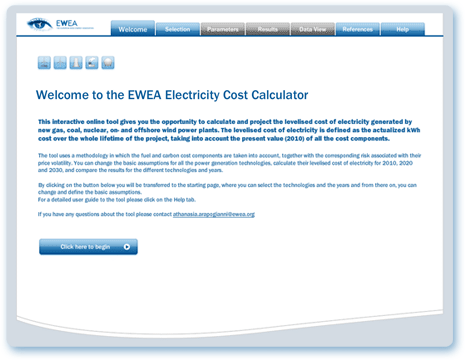Economics of wind energy
Using wind energy brings many economic benefits.
- It reduces the exposure of our economies to fuel price volatility.
- It avoids the costs which society now bears in the form of pollution and fuel imports.
Approximately 75% of the total cost of a wind farm is related to upfront costs such as the cost of the turbine, foundation, electrical equipment, grid-connection and so on. Fluctuating fuel costs have no impact on wind power generation costs. A wind turbine is capital-intensive compared to conventional fossil fuel fired technologies such as a natural gas power plant, where as much as 40-70% of costs are related to fuel and operations and maintenance.
Key texts:
- Green Growth
- Economics of Wind Energy
- Wind Energy the Facts – Economics of wind power
- Wind Energy the Facts – Industry and Markets
- Wind Energy the Facts – Executive Summary
- EWEA Factsheet on Wind Energy, Finance and Economics
- EWEA Factsheet on Wind Energy and the Job Market
Calculating the cost of electricity and comparison with other technologies
The EWEA Online Electricity Cost Calculator allows you to project the levelised cost of electricity generated by new gas, coal, nuclear, on- and offshore wind power plants. The levelised cost of electricity is defined as the actualized kWh cost over the whole lifetime of the project, taking into account the present value (2010) of all the cost components.
The tool uses a methodology in which the fuel and carbon cost components are taken into account, together with the corresponding risk associated with their price volatility. You can change the basic assumptions for all the power generation technologies, calculate their levelised cost of electricity for 2010, 2020 and 2030, and compare the results for the different technologies and years.
Please click the image below to launch the tool.




Follow EWEA on: